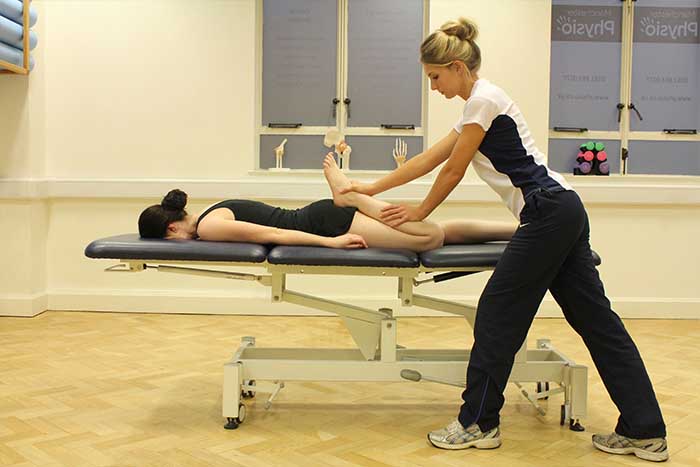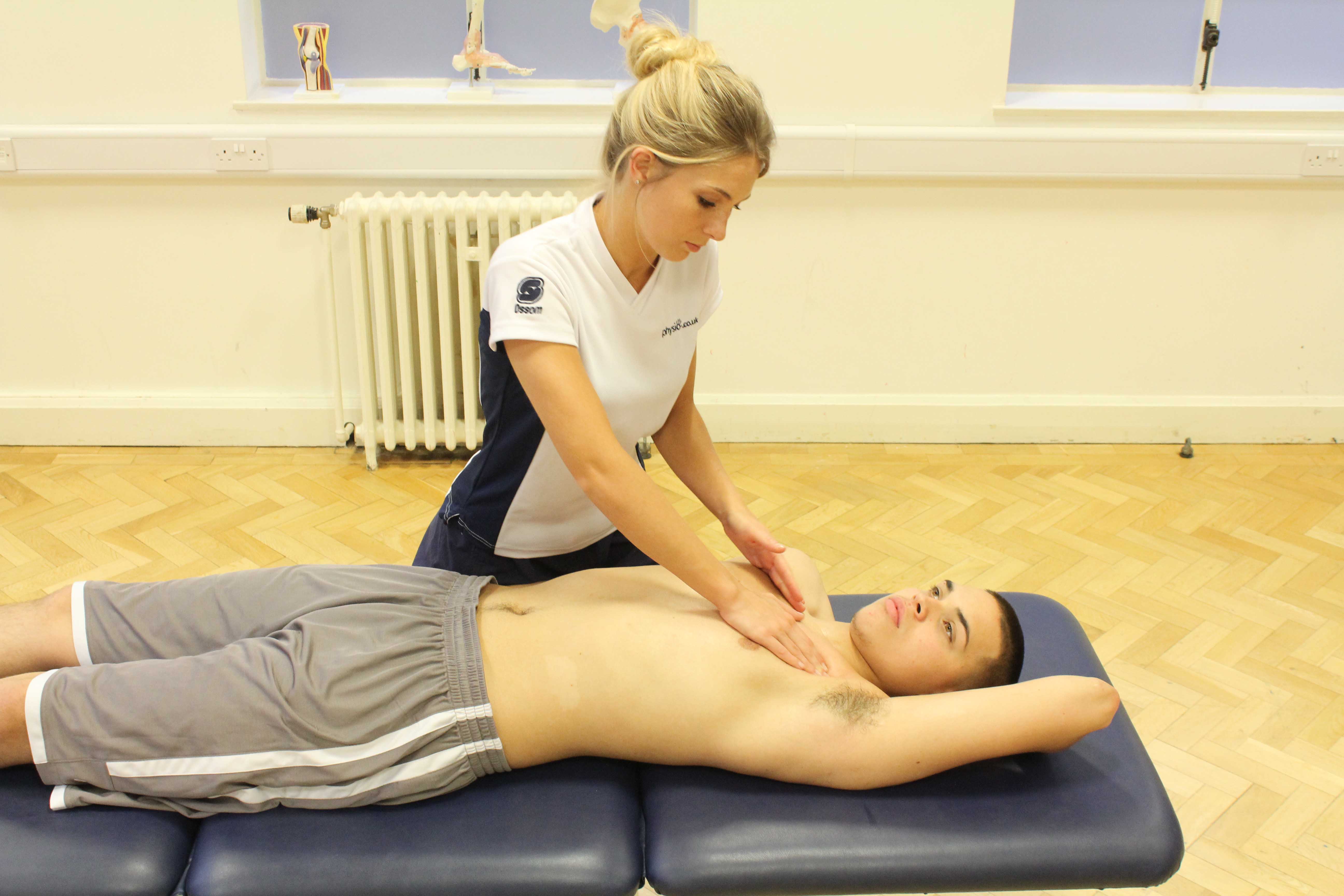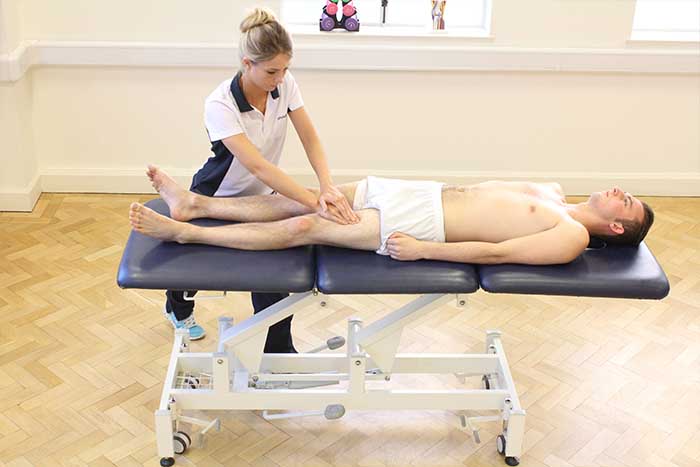A common benefit gained through massage is increased oxygenation. Increased oxygenation is where blood flow is improved, increasing oxygen availability to all muscles and cells around the body. A range of techniques can be used to increase oxygenation which helps to maintain healthy muscles and decrease pain. Our massage therapists at Physio.co.uk increase oxygenation through massage to help maximise performance and prepare a person for activity.
What is increased oxygenation
Increased oxygenation is the process in which an increase in blood flow supplies muscles and other cells within the body with an increase in oxygen. Oxygen is carried within the blood and transported to all areas of the body. Oxygen has many uses within the body including energy source, circulation, respiration, cellular exchange and many more. A massage encourages an increase in oxygenation around the body by increasing blood circulation. An increase in oxygenation can increase muscular energy, reduce muscular fatigue and keep muscles strong and healthy.
What are the benefits of increased oxygenation?
Increased oxygenation can have many benefits. The most common benefits of increased oxygenation include:
 Above: Deep tissue massage from an experienced therapist can help increase oxygenation of muscle tissue
Above: Deep tissue massage from an experienced therapist can help increase oxygenation of muscle tissueIncreased oxygenation can maximise performance. Before an event or activity, muscles may not be prepared. An increase in oxygenation occurs around the muscles as blood flow increases. An increase in blood flow is due to vasodilation and capillarisation. Vasodilation is where blood vessels dilate allowing an increase in blood to travel through them. Capillarisation is where the quantity of capillaries surrounding the muscles increases. Increasing the availability of oxygen through blood flow increases the energy available for the muscle to use. Increasing energy helps to maximise performance as muscles will tire and fatigue less easily.
Increasing oxygenation can help maintain healthy muscles. In order to keep muscles strong and less likely to damage, muscles need to maintain their health. An efficient and constant supply of blood flow is essential to keep muscles healthy. Within the blood flow is oxygen. Oxygen supplies muscles with energy which helps to reduce the effects of fatigue. An increased amount in oxygen delivered to muscles also increases cellular exchange. Cellular exchange is the process in which waste products and toxins are removed and exchanged with oxygen and other nutrients within muscles. Removing waste products and toxins and exchanging them with oxygen helps to reduce muscle sores, weakness and fatigue.
Delayed onset muscle soreness can be reduced when oxygenation is increased. Delayed onset muscle soreness can be caused by a variety of different things. The most common causes of delayed onset muscle soreness are injury, overuse and intense activity. Delayed onset muscle soreness can result in an increase in muscular pain, fatigue and weakness caused by microscopic tears within muscle fibres. Increased oxygenation helps to reduce the effects of delayed onset muscle soreness. The increased level of energy provided by oxygen can be used to reduce fatigue and also for the repair of damaged muscle fibres. If a lack of oxygen is available for muscles, a decrease in energy for the repair of muscle fibres can occur, therefore prolonging the effects delayed onset muscle soreness can have. Increasing oxygenation decreases the effects of delayed onset muscle soreness by increasing energy which helps to speed up the repair.

What techniques are used no increase oxygenation?
A range of techniques can be used to increase oxygenation. Common techniques used to increase oxygenation include:
 Above: Increased oxygenation is associated with imporved blood flow and sustained energy levels throughout the day.
Above: Increased oxygenation is associated with imporved blood flow and sustained energy levels throughout the day.Effleurage can be used to increase oxygenation. Effleurage is used on areas of the body containing soft tissues. Flattened hands and fingers are used along the treatment area to help encourage an increase in blood flow. Pressure varies when using effleurage depending on personal preference or the treatment area. Oxygenation is increased as blood circulation is increased. Increasing oxygenation using effleurage helps to decrease muscle tightness and reduce muscle soreness.
A common technique used to increase oxygenation is trigger pointing. Trigger pointing can be performed using thumbs or elbows and involves applying pressure onto trigger points. Trigger points are located in the centre of a muscle fibre and are a result of muscular knots. During a massage, pressure applied on trigger points creates an ischemic reaction as blood flow is restricted. The pressure applied and restriction in blood flow helps to break down and soften muscular knots. As pressure is released, an increase in blood flow occurs. An increase in blood flow supplies the muscles with an increase in oxygen, therefore increasing oxygenation. Increasing oxygenation through trigger pointing helps to reduce pain and restriction.
Wringing is often used to increase oxygenation. Wringing is used on areas of the body that have soft tissues. Wringing is where the soft tissues are pulled from the outside of the treatment area towards the centre in opposite directions. Wringing helps reduce muscle tightness and tension by increasing circulation and lifting the soft tissues to increase their elasticity. Much like effleurage, oxygenation is increased as the circulation of blood increases to and from the muscles. Increasing oxygenation through wringing helps to relieve restriction and reduce pain.

What situation would increased oxygenation help?
Increased oxygenation can help in various situations. The most common situations increased oxygenation can help include:
Increased oxygenation can help reduce acute pain. Muscle weakness can increase pain. When muscles are weak and unable to sustain the workload placed on them, this can result in muscular knots, fatigue and ache. Increased oxygenation provides muscles with an increase in energy enabling muscles to work for longer periods of time. When muscles are able to work for longer periods of time, they increase in strength. Increasing strength helps to reduce muscular weakness and therefore pain.
Increased oxygenation can help pre event. Before an event, muscles can be weak and lacking in energy. When muscles are in the condition where they have little energy, they are more likely to tire and fatigue during the event. An increase in oxygen helps to strengthen muscles and increase their energy, ready for activity. Increasing muscle strength and energy reduces the chances of muscles tiring and fatiguing during activity.
Summary
Increased oxygenation is where the availability of oxygen for muscles and cells within the body rises. A variety of techniques can be used to increase oxygenation including effleurage, trigger pointing and wringing. Increased oxygenation can benefit a person in many ways. The most common benefits of increased oxygenation include maximised performance, maintenance of healthy muscles and reduced delayed onset muscle soreness. Using massage to increase oxygenation can help reduce acute pain and prepare a person for activity. Our massage therapists at Physio.co.uk use massage to help reduce fatigue and increase relaxation.
How can I arrange a sports massage to increase oxygenation?
The easiest way to arrange a sports massage to increase oxygenation at Physio.co.uk is to email us at office@physio.co.uk or call us on 0800 033 7800.
Alternatively if you have any questions please feel free to contact us.
We offer a 7 day service and provide home and clinic appointments.

 0330 088 7800
0330 088 7800


































